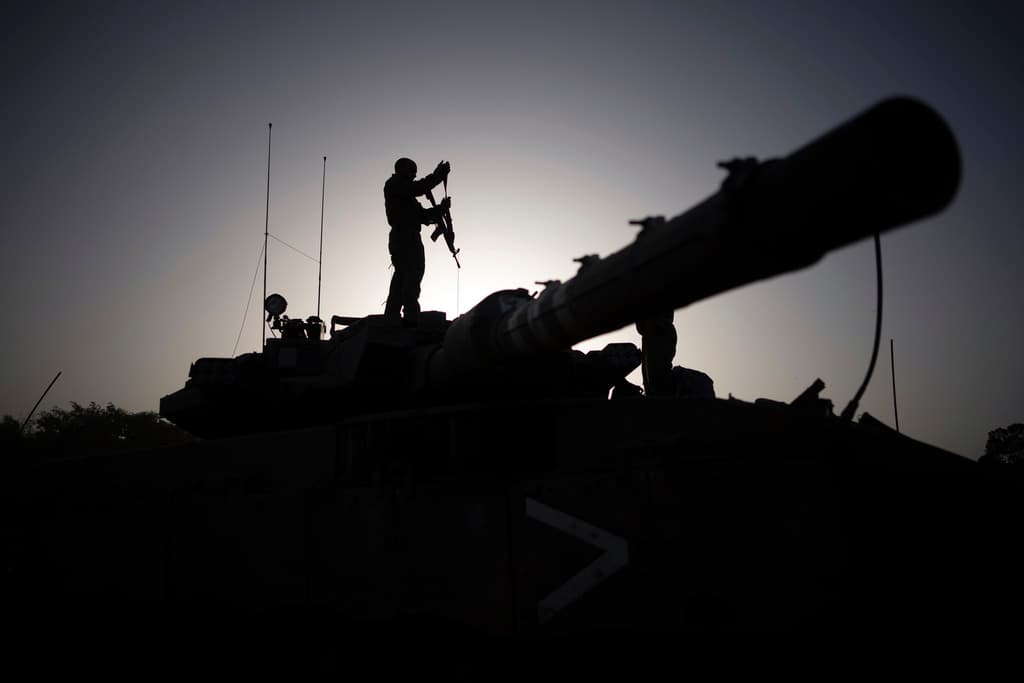All-Female IDF Tank Crew Makes History During October 7 Battles at Israel
A platoon of tanks crewed by young female soldiers killed more than 50 Hamas jihadis while playing a central role in the recapture of several Israeli kibbutz communities along the Gaza border on October 7.

The largest mass murder of Jews since 1945. The largest number of hostages taken in Israeli history. The largest-scale terrorist attack since 9/11. The Hamas terrorist attack against southern Israel on October 7 shattered many records in the worst possible ways.
But amidst the carnage and human tragedy of that day, there were also inspiring examples of courage. Off-duty Israeli soldiers who, upon hearing news of the attack, grabbed their rifles and marched toward the sound of the guns, making their way from home to the battlefield on their own initiative. Local defense squads numbering five or six kibbutzniks armed with rifles and pistols who managed to fight off scores of marauding Hamas terrorists.
But over recent days another October 7 story has emerged that combines both personal bravery and the shattering of glass ceilings in the Israeli military. A platoon of tanks crewed by young female soldiers killed more than 50 Hamas jihadis while playing a central role in the recapture of several Israeli kibbutz communities along the Gaza border.
The integration of women into combat roles within the Israeli army has been halting and controversial. The process was forced in 1995 when a young soldier named Alice Miller appealed to the Israeli Supreme Court for the right to try out for aircrew training. She failed to qualify, joining the 97 percent of trainees who wash out of the Israeli Air Force pilot’s course.
But since that landmark Supreme Court ruling, more combat roles in the IDF have been opened to women. In the year 2000, the first of three mixed-gender border defense infantry battalions, Caracal, was established. And in 2019 a decision was made to add a company of Merkava IV tanks to the battalion’s table of organization and equipment.
On the morning of October 7, a three-tank platoon of these female tank operators was stationed along the Israeli-Egyptian border at Nitzana, around 40 kilometers south of Gaza. When alerted to the attack, a single Merkava commanded by Lieutenant Shaked drove on treads on paved highways to engage the enemy, accompanied by an armored patrol vehicle on wheels.
“When we reached Kibbutz Sufa, we found an IDF armored personnel carrier that had been hit by an IED,” Staff Sergeant Hagar told Israeli press outlets in recent days. “Our company commander, Captain Karni, cocked the .50-caliber heavy machine gun mounted on the patrol vehicle preparing it for action.”
Staff Sergeant Tal-Sarah related that it was only when she saw the damaged APC with wounded lying about that she began to gain situational awareness. “The penny dropped when we began taking heavy fire from three directions that I finally understood we were at war,” she says.
These young women, all in their late teens and early 20s, had to learn and improvise under fire. “None of us had any formal training on the Katlanit remote weapons system that aimed the .50-caliber machine gun”, said Tal-Sarah. “There’s an army qualification course that must be completed before soldiers are authorized to operate the system. None of us knew how to use it, so we just learned as we went.”
The Merkava and patrol vehicle opened fire on dozens of terrorists armed with AK-47s and RPGs, killing many and causing the survivors to flee. In the meantime, two additional Merkavas joined the battle. One of these tanks was dispatched to seal a large breach in the border fence.
Another Merkava, commanded by Lieutenant Michal, joined Israeli special forces units in the fight to liberate Kibbutz Sufa from over 100 Hamas terrorists who had taken up positions throughout the village. Michal’s tank fought for over 6 hours, killing scores of terrorists with its 120mm cannon and machine guns.
Meanwhile, Captain Karni, the company commander moved from the armored personnel carrier to a Merkava and was fighting from her tank in and around nearby Kibbutz Holit. “We spotted dozens of terrorists and opened fire,” she said. “First with machine guns at the ones closest to us. And then with our cannon at the ones further away. I saw them being hit and falling.”
Then Ms. Karmi led the Israeli forces into the kibbutz, driving her 65-ton tank bulldozing its way through the locked main gate. “The tank driver spotted two terrorists lying in ambush on the side of the road,” she said. “I ordered her to run them over. So she did and we drove on into the kibbutz.”
“Did the terrorists know they were fighting against women?” asked an Israeli TV journalist during an interview.
“No,” replied Sergeant Tal-Sarah. “It’s not as if they saw Michal’s hair blowing in the wind under her Gentex [helmet]. We had a job to do and we did it.”
The family names of the female tank crew in this story have been omitted for security reasons.

